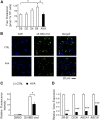In vitro exploration of ACAT contributions to lipid droplet formation during adipogenesis
- PMID: 29549095
- PMCID: PMC5928425
- DOI: 10.1194/jlr.M081745
In vitro exploration of ACAT contributions to lipid droplet formation during adipogenesis
Abstract
As adipose tissue is the major cholesterol storage organ and most of the intracellular cholesterol is distributed to lipid droplets (LDs), cholesterol homeostasis may have a role in the regulation of adipocyte size and function. ACATs catalyze the formation of cholesteryl ester (CE) from free cholesterol to modulate the cholesterol balance. Despite the well-documented role of ACATs in hypercholesterolemia, their role in LD development during adipogenesis remains elusive. Here, we identify ACATs as regulators of de novo lipogenesis and LD formation in murine 3T3-L1 adipocytes. Pharmacological inhibition of ACAT activity suppressed intracellular cholesterol and CE levels, and reduced expression of genes involved in cholesterol uptake and efflux. ACAT inhibition resulted in decreased de novo lipogenesis, as demonstrated by reduced maturation of SREBP1 and SREBP1-downstream lipogenic gene expression. Consistent with this observation, knockdown of either ACAT isoform reduced total adipocyte lipid content by approximately 40%. These results demonstrate that ACATs are required for storage ability of lipids and cholesterol in adipocytes.
Keywords: acyl-CoA:cholesterol acyltransferase; adipocytes; avasimibe; cholesterol metabolism; fatty acid synthesis; triglycerides.
Copyright © 2018 by the American Society for Biochemistry and Molecular Biology, Inc.
Conflict of interest statement
The other authors declare no conflicts of interest.
Figures




Similar articles
-
Enhanced acyl-CoA:cholesterol acyltransferase activity increases cholesterol levels on the lipid droplet surface and impairs adipocyte function.J Biol Chem. 2019 Dec 13;294(50):19306-19321. doi: 10.1074/jbc.RA119.011160. Epub 2019 Nov 14. J Biol Chem. 2019. PMID: 31727739 Free PMC article.
-
Pharmacological inhibition of acyl-coenzyme A:cholesterol acyltransferase alleviates obesity and insulin resistance in diet-induced obese mice by regulating food intake.Metabolism. 2021 Oct;123:154861. doi: 10.1016/j.metabol.2021.154861. Epub 2021 Aug 8. Metabolism. 2021. PMID: 34371065
-
ACAT1/SOAT1 maintains adipogenic ability in preadipocytes by regulating cholesterol homeostasis.J Lipid Res. 2024 Dec;65(12):100680. doi: 10.1016/j.jlr.2024.100680. Epub 2024 Oct 30. J Lipid Res. 2024. PMID: 39481851 Free PMC article.
-
Human acyl-CoA:cholesterol acyltransferase (ACAT) and its potential as a target for pharmaceutical intervention against atherosclerosis.Acta Biochim Biophys Sin (Shanghai). 2006 Mar;38(3):151-6. doi: 10.1111/j.1745-7270.2006.00154.x. Acta Biochim Biophys Sin (Shanghai). 2006. PMID: 16518538 Review.
-
Acyl-CoA:cholesterol acyltransferases (ACATs/SOATs): Enzymes with multiple sterols as substrates and as activators.J Steroid Biochem Mol Biol. 2015 Jul;151:102-7. doi: 10.1016/j.jsbmb.2014.09.008. Epub 2014 Sep 12. J Steroid Biochem Mol Biol. 2015. PMID: 25218443 Free PMC article. Review.
Cited by
-
Myeloid Acat1/Soat1 KO attenuates pro-inflammatory responses in macrophages and protects against atherosclerosis in a model of advanced lesions.J Biol Chem. 2019 Oct 25;294(43):15836-15849. doi: 10.1074/jbc.RA119.010564. Epub 2019 Sep 8. J Biol Chem. 2019. PMID: 31495784 Free PMC article.
-
Preclinical evaluation of fenretinide against primary and metastatic intestinal type‑gastric cancer.Oncol Lett. 2024 Sep 25;28(6):561. doi: 10.3892/ol.2024.14694. eCollection 2024 Dec. Oncol Lett. 2024. PMID: 39372665 Free PMC article.
-
Fatty Acid Trafficking Between Lipid Droplets and Mitochondria: An Emerging Perspective.Int J Biol Sci. 2025 Feb 10;21(5):1863-1873. doi: 10.7150/ijbs.105361. eCollection 2025. Int J Biol Sci. 2025. PMID: 40083687 Free PMC article. Review.
-
Enhanced acyl-CoA:cholesterol acyltransferase activity increases cholesterol levels on the lipid droplet surface and impairs adipocyte function.J Biol Chem. 2019 Dec 13;294(50):19306-19321. doi: 10.1074/jbc.RA119.011160. Epub 2019 Nov 14. J Biol Chem. 2019. PMID: 31727739 Free PMC article.
-
Novel Aptamer-Based Small-Molecule Drug Screening Assay to Identify Potential Sclerostin Inhibitors against Osteoporosis.Int J Mol Sci. 2021 Aug 2;22(15):8320. doi: 10.3390/ijms22158320. Int J Mol Sci. 2021. PMID: 34361085 Free PMC article.
References
-
- Farkas J., Angel A., and Avigan M. I.. 1973. Studies on the compartmentation of lipid in adipose cells. II. Cholesterol accumulation and distribution in adipose tissue components. J. Lipid Res. 14: 344–356. - PubMed
-
- Prattes S., Horl G., Hammer A., Blaschitz A., Graier W. F., Sattler W., Zechner R., and Steyrer E.. 2000. Intracellular distribution and mobilization of unesterified cholesterol in adipocytes: triglyceride droplets are surrounded by cholesterol-rich ER-like surface layer structures. J. Cell Sci. 113: 2977–2989. - PubMed
-
- Le Lay S., Krief S., Farnier C., Lefrere I., Le Liepvre X., Bazin R., Ferre P., and Dugail I.. 2001. Cholesterol, a cell size-dependent signal that regulates glucose metabolism and gene expression in adipocytes. J. Biol. Chem. 276: 16904–16910. - PubMed
-
- Kovanen P. T., Nikkila E. A., and Miettinen T. A.. 1975. Regulation of cholesterol synthesis and storage in fat cells. J. Lipid Res. 16: 211–223. - PubMed
Publication types
MeSH terms
Substances
LinkOut - more resources
Full Text Sources
Other Literature Sources
Molecular Biology Databases
Research Materials

